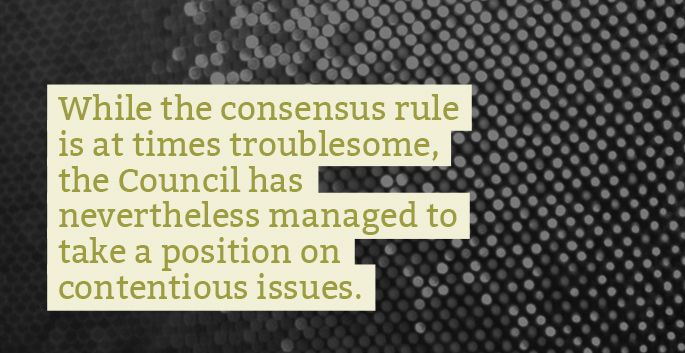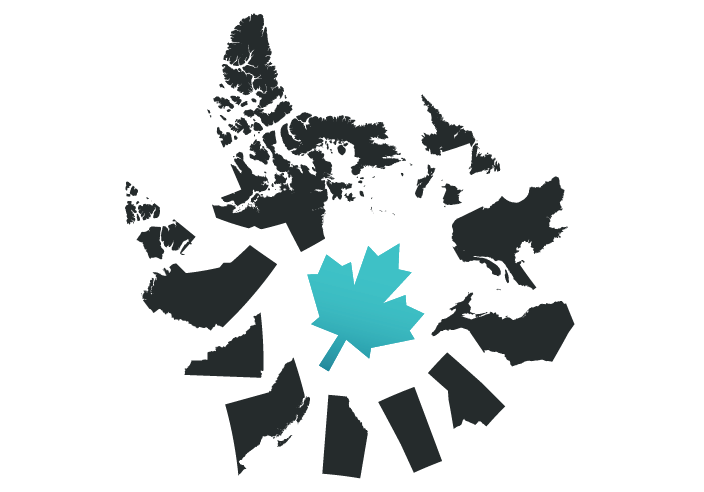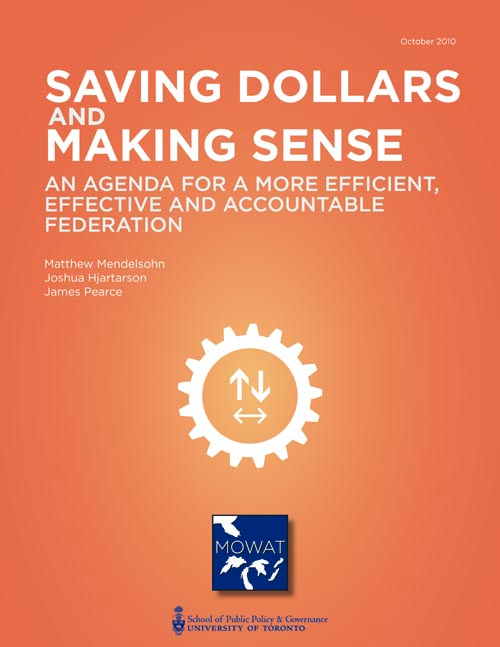August 26, 2014
10 years ago, Canada’s premiers created a new organization for provinces and territories to work together called the Council of the Federation. Here’s the TLDR version of what you need to know about it.
The Council of the Federation (COF) is what we call the group of Canada’s 13 provincial and territorial premiers when they hold formal meetings or otherwise work together as a group on shared priorities. It was created in 2003 when the premiers decided that their collective work had become more important and substantial, and that it should be reflected in a formal organization supported by a small secretariat.
Through the COF, the premiers meet at least once a year. The location of the meeting rotates among the provinces and territories, with the host also serving as the Chair of the Council. The COF is a vehicle for premiers to:
- Discuss issues of shared interest, such as health care, skills training, and education
- Agree to take action on shared priorities, such as internal trade, trade missions, and the pan-Canadian Pricing Alliance, whether through working groups or by giving direction to their Ministers
- Form common positions on national issues and present them to the public and/or the federal government

So how does the COF work?
All decisions must be reached by consensus, a rule that gives significant bargaining power to holdout jurisdictions and can result in a “watering down” of the Council’s position on a particular policy or issue. While the consensus rule is at times troublesome, the Council has nevertheless managed to take a position on contentious issues—for example, in demanding the right to opt out of the federal government’s Canada Job Grant.
Please don’t. “See oh eff” sounds much better, doesn’t it?
Aren’t Council of the Federation meetings the same as First Ministers’ meetings?
No. First Ministers’ meetings and meetings of the Council of the Federation are not the same thing, although this is a common misconception.
The main difference is that First Ministers’ meetings include – and are chaired by – the prime minister. These meetings have been an important feature of Canada’s political landscape since the 1930s, including a televised series on the Constitution hosted by Prime Minister Pierre Trudeau. However, they have been less frequent in recent years, with the last one held in 2009. First Ministers’ meetings are called by the prime minister, and Prime Minister Stephen Harper has preferred bilateral meetings with individual premiers.
While First Ministers’ meetings depend on the willingness of the prime minister, COF meetings take place at least once a year regardless of the personalities involved.
First Ministers’ meetings and meetings of the Council of the Federation are not the same thing, although this is a common misconception.
We already had First Ministers’ Meetings and Annual Premiers’ Conferences. Why was the Council of the Federation created?
The Council of the Federation was created out of the growing need for better intergovernmental collaboration. Canada’s premiers created a formal organization to support active policy and advocacy work as a cohesive unit, to more effectively drive initiatives and better lobby the federal government.
Over the last fifty years, the federal government has expanded its influence through its spending power (in key areas such as health care and social services). But this influence has come at the expense of federal-provincial-territorial relationships. The federal government pointed to increases in fiscal transfers as a sign of good faith contribution to the relationship on their part, while provinces and territories have complained about a pattern of under-funding and unpredictability on the part of the federal government.
The context for the creation of the COF also included a newly-elected federalist government in Quebec attempting to demonstrate that its interests could be represented constructively and cooperatively within Canada, as well as an extended set of negotiations on health care that would ultimately lead to the Canada Health Accord. The COF came with significant promise of establishing a renewed basis for more extensive collaboration among governments in Canada, while also enabling the premiers to take leadership and action on national issues of importance to them.

Has the COF actually fulfilled its promise?
Yes and no. While the Council of the Federation has certainly established a renewed basis for collaboration among the provinces and territories, the extent to which it has actually enabled Canada’s premiers to take action on national issues is debatable.
As provincial and territorial governments are responsible for overseeing the major share of public services, policy and regulation, and taxation and spending, it is hard to talk about national issues without involving all three levels of government. “National” policies and programs in most areas, including health care and infrastructure, depend at least in part on provincial and territorial cooperation. The COF has provided premiers with a formal platform to support active policy work as a single cohesive unit.
The COF has also achieved some success in driving policy and program agendas. In pharmacare, for instance, its pan-Canadian Pricing Alliance has significantly lowered the cost of brand name drugs. The premiers have also come together to call for the dismantling of internal trade barriers and to achieve some concessions to the Canada Job Grant.
Although it has established hard-line positions on the need for the federal government to develop and implement various policies and programs, to update others, and to provide larger fiscal transfers, the measurable success of the COF has generally been limited. The consensus rule has watered down its decision making, and it has failed to strengthen relationships between the provincial and territorial governments and the federal government.
But while it may not yet be historic, it should also not be lightly dismissed.
Related research
Saving Dollars and Making Sense
The paper argues that the federal and provincial-territorial governments in Canada are too often unproductively involved in the same policy space.
View this paper







